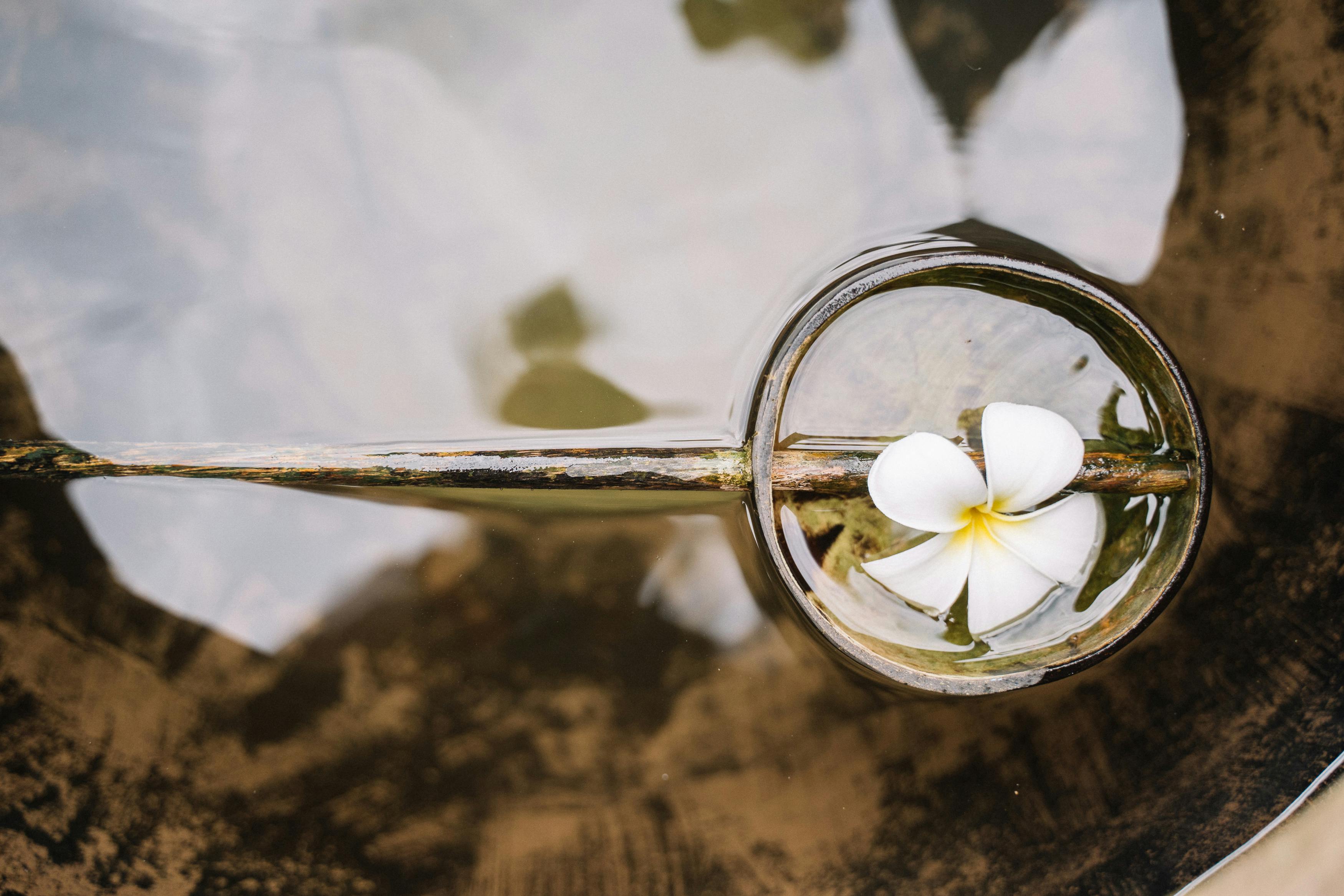Distilling well water is a great way to ensure that your drinking water is safe and free of any contaminants. It involves a process of boiling the water, collecting the steam, and then condensing it back into liquid form. The end result is pure water that has been filtered of bacteria, minerals, and other organic matter. This article will explain the steps to take when distilling well water in order to produce safe drinking water.Distilling well water is the process of boiling water until it vaporizes, then collecting the resulting steam and condensing it back into liquid form. This process removes any contaminants, minerals, or other particulates from the water, leaving it pure and clean. Distillation is often used for purifying drinking water in areas where wells are the primary source of potable water.
Distilling Well Water
Distilling well water is an effective method of purifying water for drinking, as it removes harmful toxins and chemicals that can be present in untreated water. Distilling well water also removes any bacteria and other microorganisms in the water, making it safe for consumption. The process of distillation involves boiling the water to a certain temperature, then collecting the resulting steam as it condenses. The steam is then collected in a clean container, leaving any impurities behind. The resulting distilled water is free from contaminants and can be safely consumed.
One of the main benefits of distilling well water is its ability to remove harmful toxins and chemicals from the water. These toxins can include lead, arsenic, chlorine, pesticides, and other pollutants that can be found in untreated water sources. By removing these contaminants from the well water, you can ensure that you are drinking safe and healthy drinking water.
Another benefit of distilling well water is its ability to remove bacteria and other microorganisms from the water. This helps to improve the taste and smell of your drinking water by eliminating unpleasant odors or tastes caused by these organisms.
Supplies Needed to Distill Well Water
Distilling your own well water is an excellent way to make sure that you and your family are drinking the safest, cleanest water possible. To ensure that the process is done correctly, there are a few supplies you’ll need to get started. These include a distillation unit, a condenser, an adapter or hose, a collection container for the distilled water, and high-grade filters.
The distillation unit is the main component of any well water distilling system. This unit works by boiling the untreated well water until it turns to steam. The steam is then cooled down and condenses back into liquid form as distilled water. There are many different types of distillation units available on the market today; some are more energy efficient than others so be sure to do your research before purchasing one.
The condenser is what helps convert the steam back into distilled water. It’s important that you select one that will work best with your distillation unit and provide optimal cooling power. Be sure to measure your distiller’s output size before selecting a condenser so that they
Distilling Well Water
Distilling water is an important process for ensuring that well water is safe to drink. Distillation removes impurities from the water, such as bacteria, minerals, and other contaminants. It also removes unwanted tastes or odors. Distilling well water requires some special equipment and supplies, but it is a relatively simple process that can be done at home.
Supplies Needed
The supplies needed for distilling well water include a large pot, a large bowl or container, ice, and food grade plastic tubing or a distillation kit. The pot should be large enough to hold about four gallons of water, and it should have a lid. The bowl or container should be able to hold about two gallons of liquid. Ice will help keep the temperature of the distilled water low during the distillation process. Finally, food grade plastic tubing can be used to connect the pot and bowl together so that the distilled liquid can flow from one container to another. Alternatively, a distillation kit can be purchased which includes all of the necessary components for distilling well water.
Steps for DistDistilling Well Water
Distilling well water is a great way to ensure you are getting pure, clean water free from contaminants. It is also an easy process that can be done at home with simple equipment and supplies. In this step-by-step guide, we will walk you through the process of distilling well water so you can enjoy the many benefits it has to offer.
The first step in distilling well water is to make sure you have all the necessary supplies and equipment. You will need a large pot or kettle with a lid, a large bowl or container for collecting the distilled water, and some cheesecloth or another type of filter material. You will also need access to a heat source such as a stovetop or campfire.
Once you have all the necessary supplies and equipment, you can begin the distillation process. Start by filling the pot or kettle with your well water and place it on your heat source. Cover it with the lid and bring it to a boil. As the water boils, steam will rise from it and collect on the lid. This steam will

Tips for Distilling Well Water
Distilling well water is an effective way to remove impurities and make it safe to drink. However, it can be a tricky process if you don’t know what you’re doing. Here are some tips for distilling well water that will help you get the best results:
First, make sure your well is properly maintained. Unmaintained wells can contain a variety of contaminants that can make drinking the water unsafe. Have your well inspected regularly and have any repairs done as soon as possible.
Second, use a distillation system specifically designed for well water. These systems are designed to remove specific contaminants from the water, so they are more effective than standard distillation systems. Make sure to follow the manufacturer’s instructions carefully.
Third, use a sediment filter before distillation. This will help reduce sediment in the finished product and make it easier to clean up afterwards. It will also reduce the amount of time needed for distillation.
Fourth, use a carbon filter after distillation. Carbon filters remove chlorine and other chemicals from the water, making
Common Mistakes When Distilling Well Water
Distilling well water can be a challenging process. It is important to understand the pitfalls and potential mistakes that can occur when distilling well water. Here are some of the most common mistakes when distilling well water:
1. Not using a proper filter: It is essential to use a high-quality filter when distilling well water. This will help to reduce impurities and ensure that your distilled water is of the highest quality.
2. Boiling for too long: When boiling well water, it is important to be aware of the time it takes for the steam to reach the condenser as this will determine how pure the distilled water will be. Boiling for too long can result in impurities being present in the final product.
3. Not using enough heat: Distilling well water requires an appropriate amount of heat in order to produce pure distilled water, but too much heat can also be detrimental as it can lead to burning off essential minerals in the process.
4. Not monitoring the pH
Testing the Water Quality
When looking at distilling well water, it is important to first test the water to determine its quality. Testing the water can help you understand what contaminants may be present and whether or not they need to be removed. If the water contains any toxins or heavy metals, it will need to be treated before it can be used for drinking or cooking. The test results can also help you decide on the best way to proceed with distilling the water.
Choosing a Distillation System
Once you know the quality of your well water, you can then choose a system that will best suit your needs. There are a variety of different types of systems available, including countertop, whole house, and reverse osmosis systems. Be sure to research each system thoroughly before making your decision so that you are getting one that is both effective and efficient. Additionally, consider what type of maintenance is involved with each system and how often it needs to be maintained.
Considering Cost
When deciding on a distillation system for well water, cost should also

Conclusion
Distilling well water is a great way to ensure that the water you drink is safe and free from contaminants. While distilling well water does require an initial investment in equipment, the time and money saved by avoiding potential health problems can be well worth it. Furthermore, distilling your own water also allows you to gain control over the taste of your drinking water.
The process of distilling well water is relatively simple and straightforward, though it does require some care and attention throughout each step. It’s important to make sure that all surfaces are clean prior to use, as any contamination can be transferred into your distilled water. After the distillation process is complete, it’s also important to take steps to ensure that your distilled water remains safe for consumption.
Distilling well water can provide a reliable source of safe drinking water for many years to come. With proper maintenance and use, a home-based distillation system can provide clean drinking water for a fraction of the cost of buying bottled or filtered-water products. In conclusion, distilling your own well-water at home is a great way to ensure that you have access to clean drinking-water without having to spend

